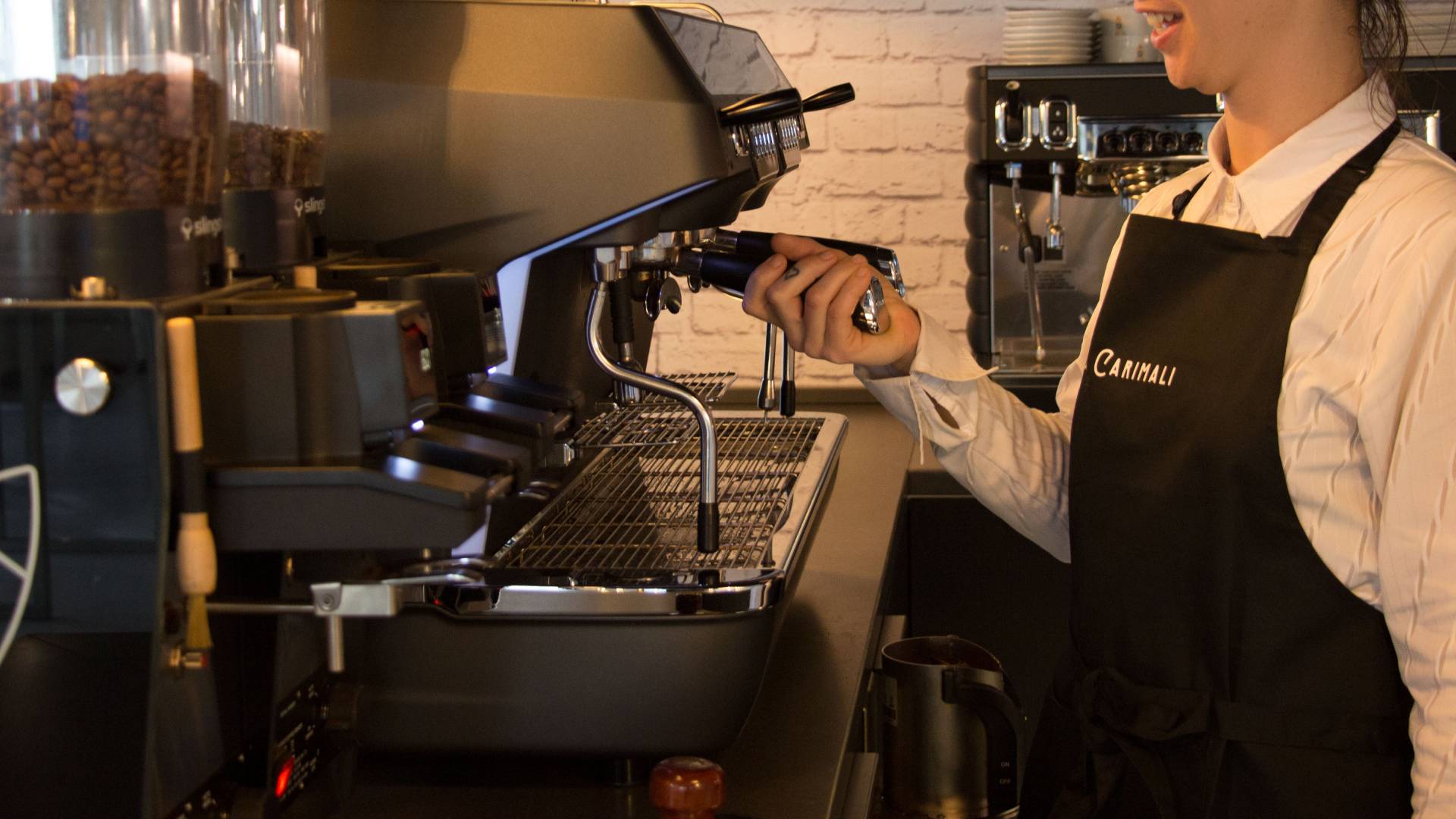Coffee shop design: Is there a perfect position for espresso machines?
Matt Haw speaks to Davide Orazi of WatchHouse about how the positioning of espresso machines in coffee shops affects customer interaction and engagement.
The espresso machine is the de facto focal point of any coffee shop, often being the first thing customers see when they enter. Any coffee professional will tell you that choosing the right position not only affects aesthetics, but also has a huge impact on workflow behind the bar and the way in which baristas interact with customers.
Since effective interaction with guests is an essential part of delivering a meaningful customer experience, espresso machine placement can make or break a business.
According to a recent survey of more than 1,200 customers and coffee professionals, one of the most important factors for a positive coffee shop experience is customer service and coffee education. This indicates that engagement is key to creating a more approachable specialty coffee sector.
Theoretically, then, the position of the machine and its accoutrements should be carefully considered to maximise the potential for customer interaction.
Davide Orazi is Coffee Operations Manager at London-based specialty coffee chain WatchHouse. Over the last two years, he has worked predominantly on coffee shop design, focusing on the deployment of equipment, workflow, and barista training.
When designing the bar, he says that it is important to consider the position of the entrance and to ensure that the point-of-sale (POS) is placed nearby. Orders can then be passed along to the bar for grinding, tamping, and extraction. He recommends assigning the role of customer interaction to the barista responsible for steaming milk and finishing drinks.
“The position of the machine makes a massive difference,” he says. “We never put the milk in front of the entrance because that disrupts the flow.”
How do specialty coffee shops position their equipment?
For years, it was widely accepted that espresso machines should face away from customers. The thinking behind this approach was that bulky machines presented a barrier between baristas and their guests, and that it was preferable for the customer to be able to watch the barista prepare their drink.
However, the drawback to this was that the barista’s back was turned during the coffee-making process, reducing the opportunity for a barista-customer relationship.
“I completely disagree with having the machine on the back bar,” Davide explains. “Showing your back to the customer means that there’s almost no interaction.”
As a specialty coffee brand, he makes it clear that WatchHouse has recognised the need to communicate aspects of the industry which are typically unfamiliar to customers. This means facilitating interaction with guests and involves educating them on aspects such as direct trade, coffee processing, and origin characteristics.
“I’ve been at the opening of new sites and have served customers who, two months later, have changed their mindset completely,” Davide recalls. “For example, people initially came in and ordered ‘normal’ filter coffee.
“However, as time went on, they learned more about processes and origins through their interactions with the baristas. These same customers eventually came back and started asking for very specific coffees.”
As a result of these experiences, all WatchHouse sites now place machines at the front of the bar. “This makes the whole experience completely different both for us and the customers,” Davide adds.
Another popular option is to position the machine at a 90-degree angle to the customer. This ensures the machine is on full display – but avoids making baristas work with their backs to the customer.
In terms of workflow and ergonomics, however, such a position may not be the best. Baristas still have to twist and turn to engage with customers, potentially putting strain on their bodies.
Improving customer engagement
Although the bustle of espresso service will always be the main point of reference in a coffee shop, the position of the machines is not the only way to improve customer engagement.
Other aspects of the coffee shop’s design, from the table layout to the volume of the music to the colour of the espresso machine itself all play a role in maximising the customer experience.
“At our latest site, we have seating in front of our brew bar where customers can sit and enjoy a more immersive experience,” Davide says.
He also emphasises the value of automation, particularly when it comes to milk-steaming, as this can significantly reduce the amount of noise during service and further frees up baristas to talk to guests as their drinks are being poured.
Leaning on Davide’s wealth of experience, it’s clear that customer engagement is about creating a personal experience for each guest. Put simply, it’s about focusing on who a guest becomes each time they experience your coffee shop.
This might mean furthering a newfound appreciation for specialty coffee or simply having a genuine interaction that improves someone’s day. So, when it comes to positioning a machine, it’s not just a matter of where it will fit; it’s about creating the right conditions for authentic interactions with guests.








